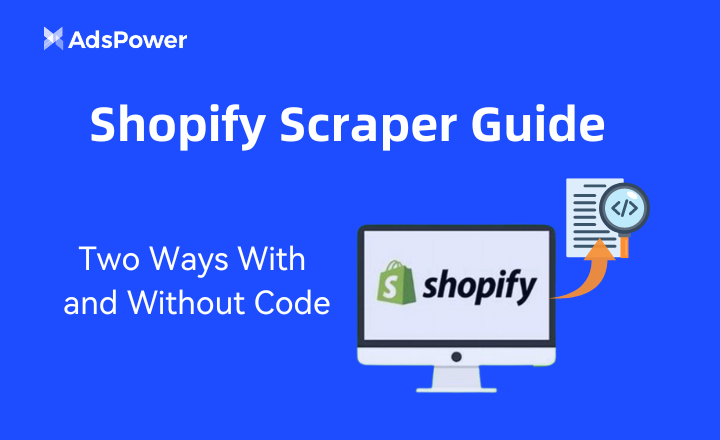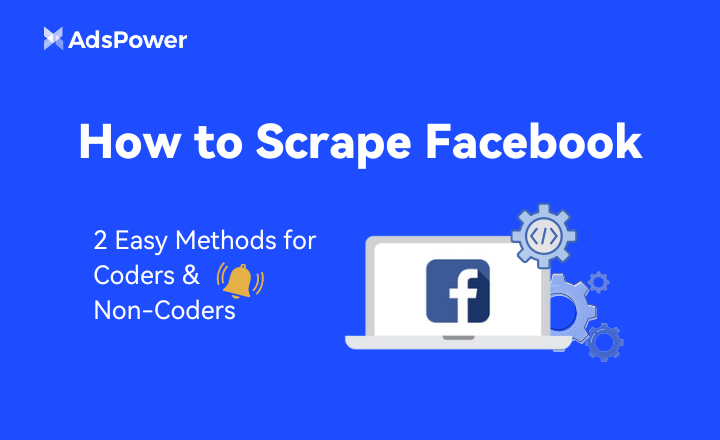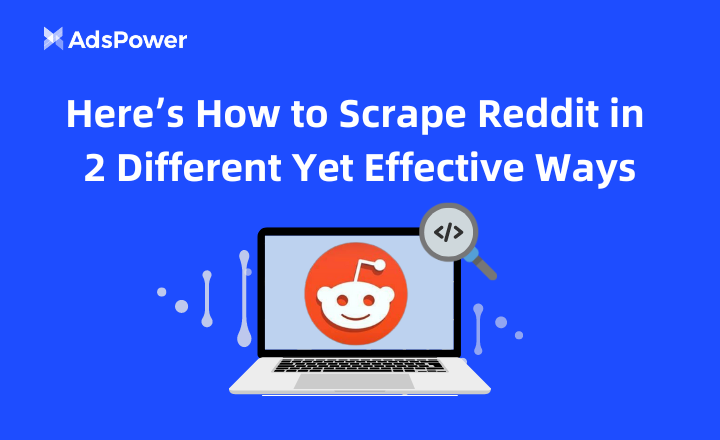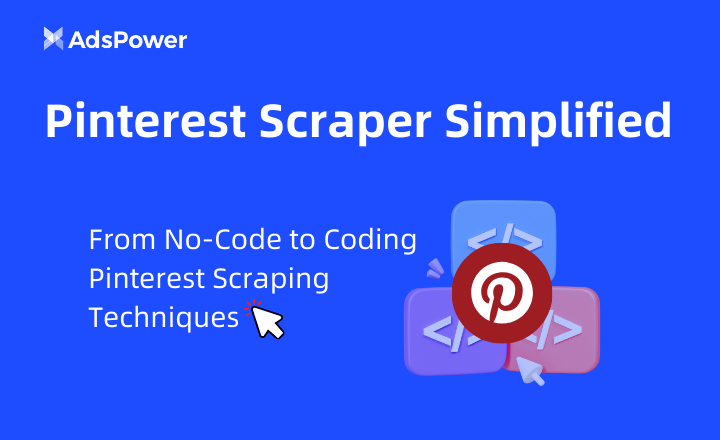निर्बाध ईकॉमर्स वेब स्क्रैपिंग के लिए 6 सुझाव
ई-कॉमर्स वेब स्क्रैपिंग व्यवसायों के लिए बाज़ार की ज़रूरी जानकारी इकट्ठा करने और अपने प्रदर्शन को बेहतर बनाने का एक अचूक ज़रिया है। हालाँकि, इस टूल की अपनी चुनौतियाँ भी हैं। ये चुनौतियाँ स्क्रैपिंग प्रक्रिया को बाधित करती हैं और डेटा को सुचारू रूप से इकट्ठा करने में बाधाएँ पैदा करती हैं।
इसके अलावा, कुछ वेबसाइटों ने अपने डेटा को स्क्रैप होने से बचाने के लिए उपाय किए हैं और इस काम को और भी जटिल बना दिया है। आज की डेटा-संचालित दुनिया में, इन बाधाओं से कैसे पार पाया जाए, यह समझना प्रतिस्पर्धी और लाभदायक बने रहने की कुंजी है।
यह ब्लॉग पोस्ट निर्बाध ई-कॉमर्स वेब स्क्रैपिंग सुनिश्चित करने के लिए पाँच आवश्यक सुझाव प्रदान करता है। ये रणनीतियाँ आपको सामान्य स्क्रैपिंग चुनौतियों से पार पाने और आवश्यक डेटा कुशलतापूर्वक एकत्र करने में मदद करेंगी।
तो आगे पढ़ें और सीखें कि ई-कॉमर्स में एक पेशेवर की तरह वेब स्क्रैपिंग कैसे करें। लेकिन सुझावों पर जाने से पहले, आइए ई-कॉमर्स के लिए वेब स्क्रैपिंग के महत्व को जल्दी से समझ लें।
वेब स्क्रैपिंग उद्योग में ई-कॉमर्स की हिस्सेदारी सबसे अधिक है!

एक हालिया अध्ययन से पता चलता है कि ई-कॉमर्स उद्योग सभी वेब स्क्रैपिंग गतिविधियों का 48% संचालन करता है। यह आंकड़ा अकेले दर्शाता है कि डेटा संग्रह में वेब स्क्रैपिंग की भूमिका कितनी महत्वपूर्ण है।
इसके अलावा शोध दर्शाते हैं कि डेटा-संचालित रणनीतियों का उपयोग करने वाले व्यवसाय अपने प्रतिस्पर्धियों से बेहतर प्रदर्शन करते हैं। ये व्यवसाय वेब स्क्रैपिंग पर बहुत अधिक निर्भर करते हैं, क्योंकि यह एकमात्र ऐसा तरीका है जो इंटरनेट से विशाल मात्रा में डेटा को तेज़ी से और न्यूनतम प्रयास के साथ स्वचालित रूप से एकत्रित कर सकता है।
ई-कॉमर्स वेब स्क्रैपिंग को सहज बनाने के 5 सुझाव + बोनस सुझाव
पिछली बार, हमने आपको ई-कॉमर्स वेबसाइट को स्क्रैप करने के तरीके के बारे में बताया था। लेकिन इससे पहले कि आप अपनी ईकॉमर्स वेब स्क्रैपिंग यात्रा शुरू करें, इसकी प्रभावशीलता को अधिकतम करने और सर्वोत्तम परिणाम प्राप्त करने के लिए कुछ सुझावों का पालन करना आवश्यक है।
जियो-टार्गेटिंग का उपयोग करें
- बाज़ार के अवसरों की पहचान करें
- प्रतिस्पर्धा का अध्ययन करें
- लक्षित विपणन या मूल्य निर्धारण रणनीतियाँ बनाएँ
हालाँकि, जब आप बार-बार बड़ी मात्रा में डेटा स्क्रैप करते हैं, तो आपको चुनौतियों का सामना करना पड़ेगा। यह गतिविधि ई-कॉमर्स वेब स्क्रैपर को बॉट के रूप में चिह्नित कर सकती है और आपको ब्लॉक भी कर सकती है। कई वेबसाइटें अपने भौगोलिक स्थान के भीतर उपयोगकर्ताओं की पहुँच को प्रतिबंधित करती हैं, और बाहरी आईपी पतों का पता लगाकर उन्हें ब्लॉक कर दिया जाता है।
इस समस्या का सबसे आसान समाधान आईपी रोटेशन है। वेब स्क्रैपर अपने आईपी पतों को छिपा सकते हैं और प्रॉक्सी का उपयोग करने वाले वास्तविक उपयोगकर्ताओं की तरह, विभिन्न स्थानों से साइट एक्सेस करते हुए दिखाई दे सकते हैं। यह तरीका स्क्रैपर के बॉट जैसे व्यवहार को भी छुपाता है और उसे ब्लॉक होने से रोकता है।
लेकिन अगर आप जिस वेबसाइट से निपट रहे हैं, उसमें उन्नत एंटी-स्क्रैपिंग उपाय मौजूद हैं, तो आवासीय IP का इस्तेमाल करना ज़रूरी है। ये लक्षित क्षेत्र में इंटरनेट सेवा प्रदाताओं द्वारा प्रदान किए जाते हैं और इनके पकड़े जाने की संभावना कम होती है। ऐसे मामलों में मुफ्त प्रॉक्सी की सिफारिश नहीं की जाती है, क्योंकि वेबसाइटों के पास अक्सर ज्ञात मुफ्त आईपी की एक सूची होती है और उन्हें सक्रिय रूप से ब्लॉक कर दिया जाता है।
स्क्रैपिंग की गति धीमी करें
वेबसाइटें अक्सर एक निश्चित समय सीमा के भीतर उपयोगकर्ता द्वारा किए जा सकने वाले अनुरोधों की संख्या पर सीमाएं लगाती हैं, जो ईकॉमर्स वेब स्क्रैपिंग में एक चुनौती पेश करती है, जहां स्क्रैपर्स आमतौर पर कम समय अवधि में कई अनुरोध भेजते हैं। यह तेज़ अनुरोध दर मानवीय ब्राउज़िंग गति की तुलना में अस्वाभाविक है और इसके कारण सर्वर स्क्रैपर को बॉट के रूप में पहचान सकते हैं और उसके आईपी पते पर प्रतिबंध लगा सकते हैं।
पता लगाने और ब्लॉक करने से बचने का तरीका स्क्रैपिंग प्रक्रिया को धीमा करना है। स्क्रैपर अनुरोधों के बीच यादृच्छिक अंतराल लागू करके या प्रतीक्षा आदेश जोड़कर मानवीय ब्राउज़िंग पैटर्न की अधिक बारीकी से नकल कर सकता है। यह दृष्टिकोण वेबसाइट के एंटी-बॉट सिस्टम को ट्रिगर करने के जोखिम को कम करता है और ई-कॉमर्स ब्लॉक हुए बिना स्क्रैपिंग की अनुमति देता है।
कैप्चा से बचें
वेबसाइटें आमतौर पर वे संदिग्ध उपयोगकर्ता गतिविधि के जवाब में कैप्चा उत्पन्न करते हैं। इससे ई-कॉमर्स स्क्रैपिंग गतिविधियाँ रुक जाती हैं क्योंकि स्क्रैपर्स के पास आमतौर पर कैप्चा हल करने की प्रणाली का अभाव होता है, और कैप्चा हल करने को स्वचालित करना एक कठिन काम है।
एक संभावित समाधान कैप्चा-हल करने वाली सेवाओं का उपयोग करना है, जो शुल्क लेकर इन परीक्षणों को हल करने के लिए वास्तविक लोगों को नियुक्त करती हैं। हालाँकि, केवल इन सेवाओं पर निर्भर रहना आर्थिक रूप से बोझिल हो सकता है। कैप्चा समाधान को स्वचालित करने के लिए भी उपकरण उपलब्ध हैं, लेकिन इनमें विश्वसनीयता संबंधी समस्याएँ हो सकती हैं, खासकर जब वेबसाइटें अपने कैप्चा तंत्र को लगातार और अधिक जटिल बनाने के लिए अपडेट करती रहती हैं।
ऐसी स्थिति में, सबसे प्रभावी समाधान उस मूल कारण का समाधान करना है जो कैप्चा उत्पन्न होने का कारण बनता है। मुख्य बात यह है कि आप अपने वेब स्क्रैपर को इस तरह कॉन्फ़िगर करें कि वह एक वास्तविक उपयोगकर्ता के व्यवहार की नकल करे। इसमें छिपे हुए जाल से बचने, प्रॉक्सी का उपयोग करने और आईपी पते और हेडर को घुमाने और स्वचालन सुरागों को मिटाने की रणनीतियाँ शामिल हैं।
एंटी-बॉट सिस्टम से बचें
वेबसाइटें उपयोगकर्ता फ़िंगरप्रिंट बनाने के लिए HTTP हेडर जानकारी का उपयोग करती हैं, जो उपयोगकर्ताओं की पहचान करने और निगरानी करने में मदद करती है और बॉट्स को मानव उपयोगकर्ताओं से अलग करती है।
इस हेडर में एक उपयोगकर्ता-एजेंट स्ट्रिंग होती है जब आप उनके सर्वर से जुड़ते हैं। इस स्ट्रिंग में आमतौर पर इस्तेमाल किए जा रहे ब्राउज़र और डिवाइस की जानकारी शामिल होती है। आम उपयोगकर्ताओं के लिए यह कोई समस्या नहीं है क्योंकि वे सामान्य ब्राउज़र, डिवाइस और ऑपरेटिंग सिस्टम का इस्तेमाल करते हैं। लेकिन चूंकि स्क्रैपर्स आमतौर पर एक मानक ब्राउज़र के माध्यम से स्क्रैप नहीं करते हैं, इसलिए उनकी UA स्ट्रिंग उनकी बॉट पहचान को दूर कर देती है।
इस समस्या के लिए एक समाधान ब्राउज़र नाम, संस्करण और ऑपरेटिंग सिस्टम के स्थान पर सामान्य तत्वों को शामिल करके स्क्रिप्टिंग के माध्यम से उपयोगकर्ता-एजेंट स्ट्रिंग को मैन्युअल रूप से संपादित करना है।
यहाँ यह कैसे करें;
लेकिन एक ही UA स्ट्रिंग से बार-बार अनुरोध करने पर आप अभी भी पकड़े जा सकते हैं। इसलिए, अतिरिक्त सुरक्षा के लिए, आप अपनी स्क्रिप्ट में विभिन्न उपयोगकर्ता एजेंट स्ट्रिंग्स की एक सूची का उपयोग कर सकते हैं और एंटी-बॉट सिस्टम को अलार्म से बचाने के लिए उन्हें बेतरतीब ढंग से घुमा सकते हैं।
अधिक विश्वसनीय समाधान के लिए, आप ब्राउज़र स्वचालन टूल जैसे Selenium या Puppeteer को AdsPower जैसे एंटी-डिटेक्ट ब्राउज़र का उपयोग करके स्क्रैप करने के लिए। इन ब्राउज़रों में फ़िंगरप्रिंटिंग से बचाव के लिए कई अंतर्निहित उपाय हैं, जिनमें उपयोगकर्ता के फ़िंगरप्रिंट को मास्क करना, संशोधित करना और घुमाना शामिल है।
डायनेमिक वेबसाइट्स से सावधान रहें
डायनेमिक वेबसाइट्स विज़िटर के आधार पर अपने वेबपेज की सामग्री और लेआउट बदलती हैं। यहां तक कि एक ही विज़िटर के लिए, डायनामिक वेबसाइटें निम्नलिखित कारकों के आधार पर अलग-अलग विज़िट पर अलग-अलग वेब पेज दिखाती हैं:
- स्थान
- सेटिंग्स
- समय क्षेत्र
- या उपयोगकर्ता की गतिविधियाँ जैसे खरीदारी की आदतें
इसके विपरीत, स्थिर वेबसाइटें सभी उपयोगकर्ताओं के लिए समान सामग्री प्रदर्शित करती हैं। यह ई-कॉमर्स वेब स्क्रैपिंग में एक चुनौती पेश करता है क्योंकि स्क्रैप की जाने वाली डायनामिक वेबसाइटों के वेबपेज ब्राउज़र पर लोड होने तक मौजूद नहीं होते हैं।
आप सेलेनियम को स्वचालित करके एक हेडफुल ब्राउज़र पर डायनामिक वेबपेज लोड करने और फिर उनकी सामग्री को स्क्रैप करने के द्वारा इस चुनौती को पार कर सकते हैं। लेकिन असली ब्राउज़र पर सभी वेबपेजों के पूरी तरह से लोड होने का इंतज़ार करने में बहुत समय लगेगा क्योंकि सेलेनियम एसिंक्रोनस क्लाइंट्स को सपोर्ट नहीं करता।
वैकल्पिक रूप से, आप Puppeteer या Playwright का इस्तेमाल कर सकते हैं, जो एसिंक्रोनस वेब स्क्रैपिंग की सुविधा देते हैं, जहाँ स्क्रैपर अनुरोधित वेबपेज लोड होने के दौरान अन्य वेबपेजों का अनुरोध कर सकता है। इस तरह, स्क्रैपर को किसी वेबपेज के रिस्पॉन्स का इंतज़ार नहीं करना पड़ता, और प्रक्रिया बहुत तेज़ हो जाती है।
बोनस टिप ⇒ जोखिम-मुक्त ईकॉमर्स वेब स्क्रैपिंग के लिए AdsPower का उपयोग करें
हालांकि ये टिप्स ईकॉमर्स वेबसाइटों को स्क्रैप करने की चुनौतियों से निपटने में कुछ हद तक मदद कर सकते हैं, लेकिन वे पूरी तरह से सुरक्षित नहीं हैं। उदाहरण के लिए, धीमी गति से या ऑफ़-पीक घंटों में भी स्क्रैपिंग उन्नत एंटी-स्क्रैपिंग मैकेनिज़्म वाली वेबसाइटों की पकड़ से बच नहीं सकती।
इसी तरह, IP रोटेशन और प्रॉक्सी के कारण भी स्क्रैपर्स की पहचान करना मुश्किल हो सकता है।
ये सभी सीमाएँ एक सहज ई-कॉमर्स वेब स्क्रैपिंग अनुभव सुनिश्चित करने के लिए एक विश्वसनीय समाधान की आवश्यकता को रेखांकित करती हैं। AdsPower इसी उद्देश्य से बनाया गया है। AdsPower में आपके स्क्रैपर को वास्तविक उपयोगकर्ता के रूप में छिपाने और पहचान से बचने के लिए सभी तकनीकें हैं।
यह आपके स्क्रैपर के डिजिटल फिंगरप्रिंट को मास्क करके ऐसा करता है, जो वेबसाइटों को स्क्रैपर को फ़्लैग करने और बाधाओं के रूप में CAPTCHA उत्पन्न करने से रोकता है। इसके अलावा, AdsPower गतिशील वेबसाइटों द्वारा उत्पन्न चुनौतियों से निपटने के लिए हेडफुल और हेडलेस, दोनों ब्राउज़रों के लाभों को एक साथ जोड़ता है।
इन सुविधाओं के अलावा, AdsPower डेटा निष्कर्षण प्रक्रिया को बेहतर बनाने के लिए समानांतर रूप से कई प्रोफ़ाइल बनाने की सुविधा भी देता है। यह समय और संसाधनों की बचत के लिए ई-कॉमर्स वेब स्क्रैपिंग को स्वचालित करने में भी मदद करता है।
डेटा की शक्ति का उपयोग करें!
हालांकि ईकॉमर्स वेब स्क्रैपिंग में उन्नत एंटी-बॉट सिस्टम से लेकर गतिशील वेबसाइटों की जटिलताओं तक, चुनौतियों का अपना उचित हिस्सा होता है, इन बाधाओं को दूर किया जा सकता है।
आप जियो-टार्गेटिंग, अपनी स्क्रैपिंग स्पीड को धीमा करने, एंटी-बॉट सिस्टम को बायपास करने का तरीका सीखने, गतिशील वेबसाइटों के अनुकूल होने और वेबसाइटों को CAPTCHAs उत्पन्न करने से रोकने जैसे प्रभावी सुझावों का उपयोग करके अपने ईकॉमर्स वेब स्क्रैपिंग को बढ़ा सकते हैं। और चीजों को और अधिक मजबूत बनाने के लिए, आपके स्क्रैपर को वेबसाइटों की नज़र से दूर रखने के लिए AdsPower के एंटी-डिटेक्ट ब्राउज़र से बेहतर कोई प्लेटफ़ॉर्म नहीं है।
तो, आइए इन सुझावों को अमल में लाएँ और डेटा की शक्ति का उपयोग करें।

लोग यह भी पढ़ें
- Shopify स्क्रैपर गाइड: कोड के साथ और बिना कोड के दो तरीके

Shopify स्क्रैपर गाइड: कोड के साथ और बिना कोड के दो तरीके
Shopify को स्क्रैप करना दूसरी ई-कॉमर्स साइट्स से ज़्यादा आसान है। नो-कोड स्क्रैपर और पायथन स्क्रिप्ट पर हमारी गाइड से Shopify डेटा एक्सपोर्ट करना सीखें।
- फेसबुक स्क्रैप कैसे करें: कोडर्स और नॉन-कोडर्स के लिए 2 आसान तरीके

फेसबुक स्क्रैप कैसे करें: कोडर्स और नॉन-कोडर्स के लिए 2 आसान तरीके
इस ब्लॉग के माध्यम से जानें कि फेसबुक को कुशलतापूर्वक कैसे स्क्रैप किया जाए और इसके एंटी-स्क्रैपिंग तंत्र को कैसे बायपास किया जाए।
- रेडिट को दो अलग-अलग लेकिन प्रभावी तरीकों से स्क्रैप करने का तरीका यहां बताया गया है

रेडिट को दो अलग-अलग लेकिन प्रभावी तरीकों से स्क्रैप करने का तरीका यहां बताया गया है
इस ब्लॉग में दो सरल तरीकों का उपयोग करके आसानी से Reddit डेटा को स्क्रैप करने और अंतर्दृष्टि प्राप्त करने का तरीका जानें।
- Pinterest स्क्रैपर सरलीकृत: बिना कोड से कोडिंग तक Pinterest स्क्रैपिंग तकनीकें

Pinterest स्क्रैपर सरलीकृत: बिना कोड से कोडिंग तक Pinterest स्क्रैपिंग तकनीकें
इस ब्लॉग में उपयोगकर्ता-अनुकूल Pinterest स्क्रैपर या पायथन का उपयोग करके Pinterest को स्क्रैप करना सीखें।
- क्या अमेज़न से स्क्रैपिंग करना कानूनी है? 6 ज़रूरी सुझाव और विचार

क्या अमेज़न से स्क्रैपिंग करना कानूनी है? 6 ज़रूरी सुझाव और विचार
क्या अमेज़न स्क्रैपिंग कानूनी है? अमेज़न स्क्रैपिंग शुरू करने से पहले आपको किन बातों का ध्यान रखना चाहिए? ये वो सवाल हैं जिनके जवाब हम इस ब्लॉग में देंगे।


